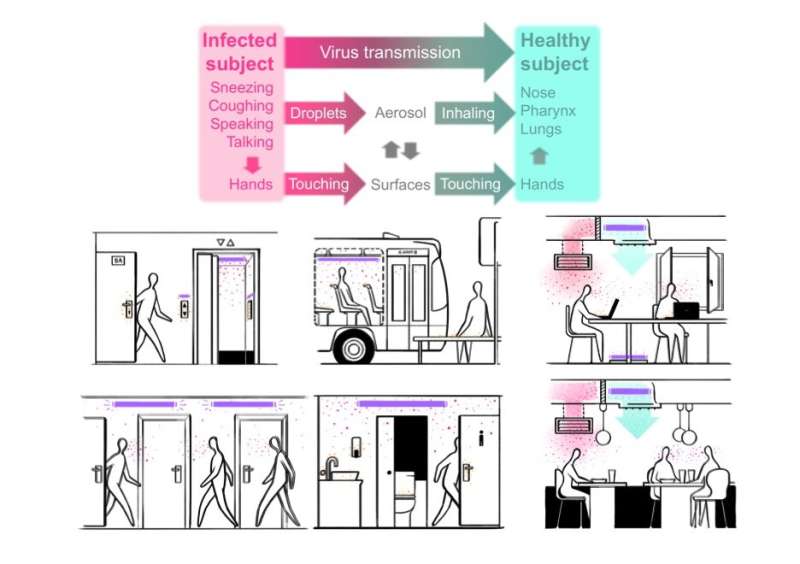Scientists support the use of ultraviolet light to reduce SARS-CoV-2 transmission indoors

The SARS-CoV-2 outbreak is posing an extraordinary challenge that requires swift worldwide action for the massive deployment of affordable and ready-to-apply measures to drastically reduce its transmission probabilities in indoor spaces, and eventually return to conventional activities such as working at the office, going to school, or even attending entertainment events.
Studies show that the virus transmission follows two main paths. Firstly, the virus can transmit through air in droplets exhaled by infected individuals and inhaled by healthy individuals. Secondly, it can be deposited on surfaces from either exhalations or hand contact. Now, several measures are being adopted to help prevent the transmission of this disease. The common ones refer to facial masks and other physical barriers that if properly used have proven to be highly effective but that however depend on compliance of the population.
A long series of studies suggest that virus transmission in indoor spaces has a much higher transmission rate than outdoors. Filters and chemicals have been presented as possible solutions to minimize this problem, but even though these are efficient solutions to reduce the concentration of contaminated particles and droplets through ventilation systems, their installation may be costly and time-consuming. In addition, chemicals such as ozone are very effective for virus disinfection, but if misused they are harmful for humans.

In this context, in a study recently published in ACS Nano, ICREA Prof. at ICFO Javier García de Abajo, in collaboration with ICREA Profs. Andreas Meyerhans (Universitat Pompeu Fabra) and Joan Rosell-Llompart (University Rovira i Virgili), together with Profs. Rufino Javier Hernández (University of the Basque Country), Ido Kaminer (Technion), and Tilman Sanchez-Elsner (University of Southampton), experts in the fields of virology, immunology, aerosols, architecture, and physics, have surveyed the possible methods to prevent SARS-CoV-2 propagation in indoor spaces. Following this survey, they advocate for one measure that they believe to be particularly efficient, easily deployable, and economically affordable: virus inactivation by ultraviolet light.
The study gives information on the currently available UV-C sources, such as fluorescent lamps, microcavity plasmas, and LEDs, emphasizing that, by irradiating this type of light inside the ventilation systems of buildings and in shared indoor spaces while not in use, it is possible to quickly and efficiently deactivate airborne and surface-deposited SARS-CoV-2 viruses.
They also explore costs and investments in deploying such technology and argue that a global capital investment of a few billion dollars in UV-C sources could protect of the order of ~109 indoor workers worldwide.
More information: F. Javier García de Abajo et al. Back to Normal: An Old Physics Route to Reduce SARS-CoV-2 Transmission in Indoor Spaces, ACS Nano (2020). DOI: 10.1021/acsnano.0c04596

















